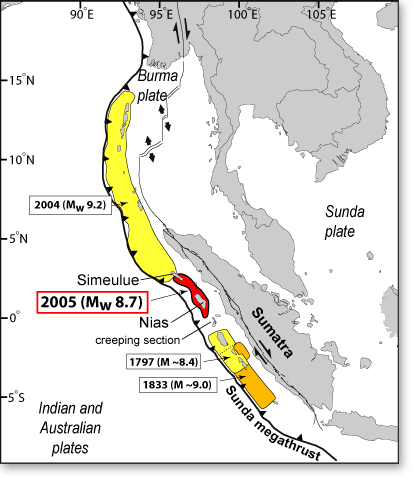On Boxing Day 2004 a magnitude 9.0 earthquake triggered the sudden upthrust of 1000 km of convergent plate boundary as shown below. As the plate pushed upwards, it also pushed the water above it upwards. Given that the water depth was between 5000 - 7500 meters, it generated tsunamis along the coastlines of many nations in the Indian Ocean




Given the proximity of the coast to the earthquake site , Indonesia and Banda Aceh suffered the most. Up to 200,000 people were recorded dead or missing. Other countries (Thailand, Sri Lanka, and India) lost tens of thousands of people. The wave reached as far as Africa where over 300 were killed.
Because this is a case study I am not going to spend to much time writing about what happened in individual countries. Things to consider are:
- Damage to buildings
- Damage to infrastructure (sewerage, water supply, roads, ports etc)
- Release of polluting chemicals if industrial areas were struck by the wave
- Contamination of groundwater supplies that may have been used for drinking.
- Loss of reefs and mangroves which may have acted a fish nurseries
- Saltwater pollution on land
While earthquakes are difficult to predict (especially those underwater), and impossible to stop, one piece of technology can be deployed to save lives. The DART (Deep ocean Assessment and Recording of Tsunamis) can detect an oncoming tsunami and evacuation orders can be given if required.

Following the Boxing Day tsunami, efforts have increased to deploy these systems into the Indian Ocean.

No comments:
Post a Comment